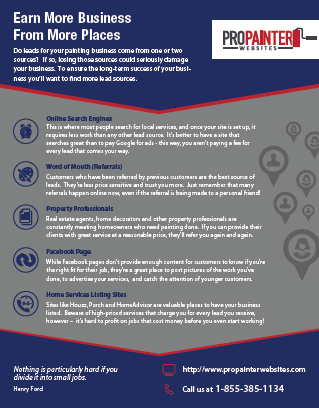When you're budgeting for an industrial paint job, it's easy to neglect specific costs that can sneak up on you. You might assume you've covered every little thing, yet concealed expenditures like surface area preparation and allows can rapidly accumulate. By identifying these potential mistakes beforehand, you can produce a much more precise budget plan. Yet what details elements should you think about to prevent those costly surprises? Allow's discover how to assess your job's range efficiently.
Examining the Extent of Your Project
Before diving right into an industrial paint job, it's vital to examine the range of your job.
Beginning by establishing the locations that need painting and the overall square video entailed. Take into consideration the type of surfaces, whether they're drywall, wood, or metal, as this influences the products and labor required.
Next off, examine look at this now of these surfaces; any kind of repairs or prep work will certainly affect your timeline and budget plan.
Don't forget to account for the type of paint you want, as high quality can vary substantially in price.
Lastly, think of ease of access. If certain locations need special tools or additional safety measures, you'll require to factor those prices right into your general spending plan.
Recognizing these components will set you up for success.
Identifying Possible Hidden Expenses
As soon as you've evaluated the range of your commercial paint task, it's time to think about the potential concealed expenses that can emerge.
You might overlook costs like surface preparation, which can include cleansing, patching, or priming. Weather-related hold-ups can also bring about unexpected prices, so watch on the forecast.
If your building has numerous degrees or hard-to-reach locations, you may sustain extra labor fees. Furthermore, take into interior painters of authorizations or evaluations that may be needed by regional regulations.
Lastly, do not forget the potential for increased expenses if you require unique finishes or products. By determining these possible concealed costs upfront, you can budget more effectively and stay clear of surprises down the line.
Developing a Backup Plan
As you progress with your industrial paint task, it's essential to develop a contingency strategy that resolves unforeseen difficulties.
Start by recognizing possible dangers, like climate delays or supply lacks. Assign a portion of your budget plan-- usually 10-15%-- to cover these unforeseen costs.
Next off, established clear timelines and connect them with your group, so everybody's on the same web page. Routinely assess your strategy and adjust it as needed, particularly if circumstances change.
Ultimately, ensure you have reputable get in touches with, such as providers and subcontractors, that can help you navigate any type of problems that develop.
Final thought
Finally, budgeting for your industrial paint task calls for cautious preparation and understanding of prospective concealed prices. By analyzing the extent of your task and identifying locations where expenses might develop, you can create a much more exact budget plan. Always include a backup strategy to manage unexpected problems. Staying versatile and assessing previous tasks will certainly also aid you make educated choices. With these ideas, you'll be better prepared to manage your prices and guarantee an effective outcome.
